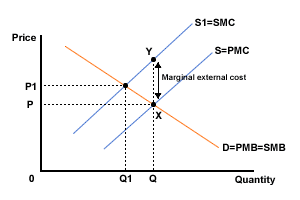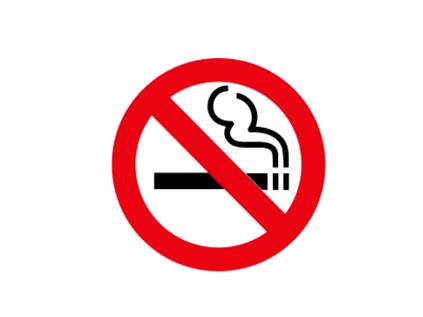Demerit goods
| Definition: Demerit Goods are goods that are socially undesireable and are either over-produced or over-consumed due to externalities and the market. |
Examples of demerit goods are cigarettes, alcohol and all other addictive drugs such as heroine and cocaine.
Market forces neither possesses a 'heart' to enable it to help those in need, nor ae they inherently able to make value judgements about which commodities are good or bad for society as a whole: it is prices and profits which act as the 'guiding light' to resource allocation.
However, the consumption of demerit goods imposes considerable negative externalities on society as a whole, such that the private costs incurred by the individual consumer are significantly less than the social costs: for example, cigarette smokers not only damage their own health, but also impose a cost on the rest of society in terms of those who involuntarily passively smoke and the additional cost to the National Health Service in dealing with smoking-related diseases. (NB again the MPC and MSC refer to tha act of consumption and so reflect the costs of consumption to the smoker) Thus, the price that consumers pay for a packet of cigarettes is not related to the social costs to which they give rise i.e. the marginal social cost will exceed the market price and over-consumption will occur, causing a misallocation of society's scarce resources. This is illustrated in figure 1 below.

Figure 1 Over-consumption of a demerit good
The diagram illustrates how the market fails in the case of demerit goods. At a market price of OP, OQ quantity of the demerit good is consumed, where demand (private marginal benefit) equals supply (private marginal cost). However, at OQ the marginal social cost exceeds the price by the vertical distance XY, the value of the marginal external cost. Social optimality would require a smaller level of consumption at OQ1, where price = marginal social cost = marginal social benefit.

